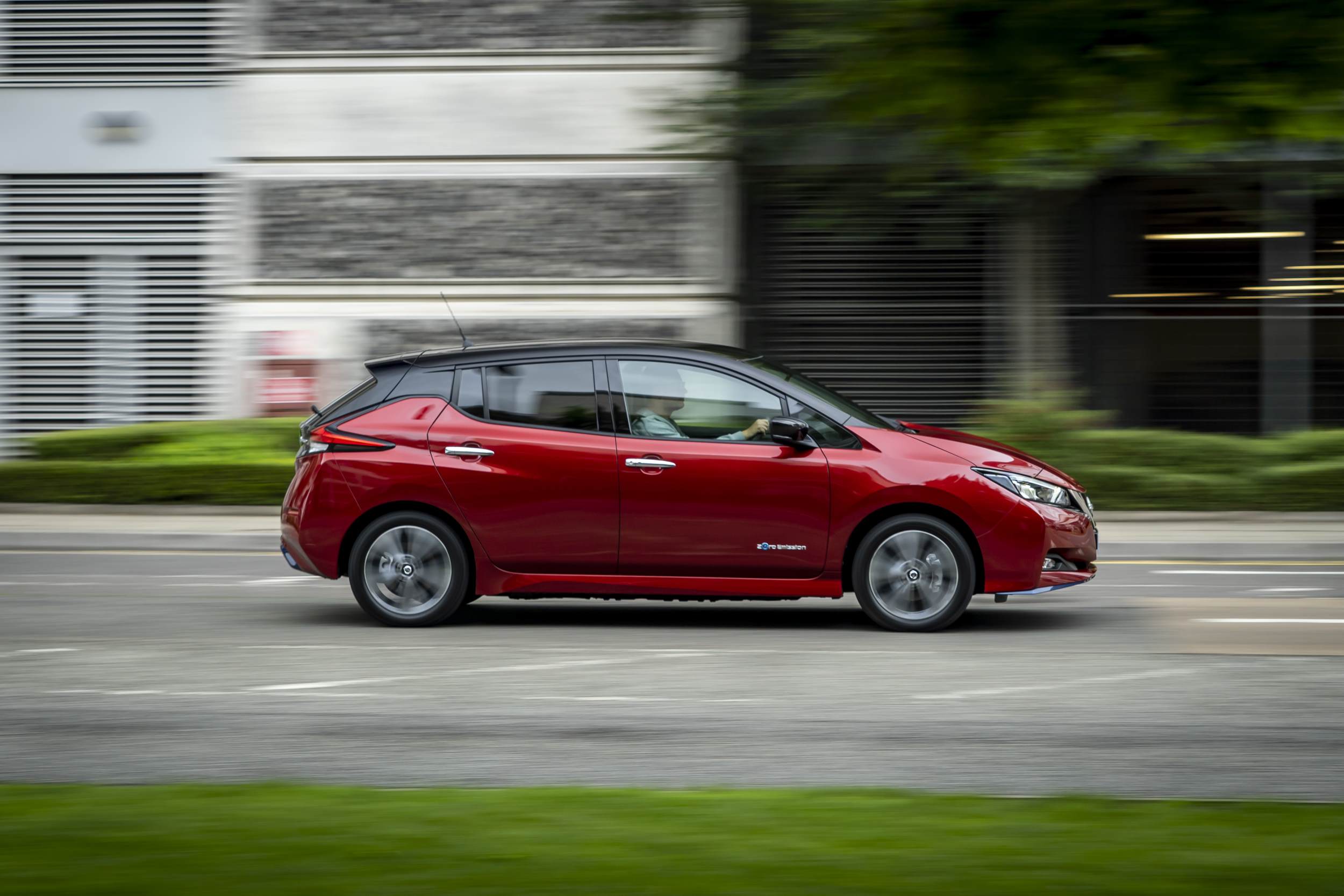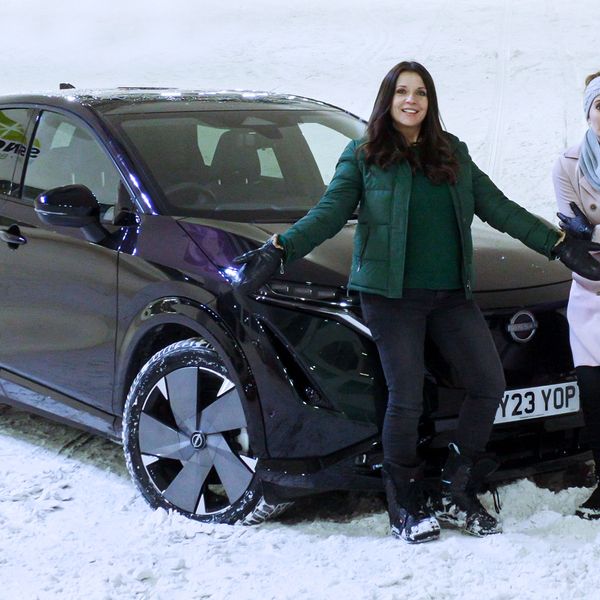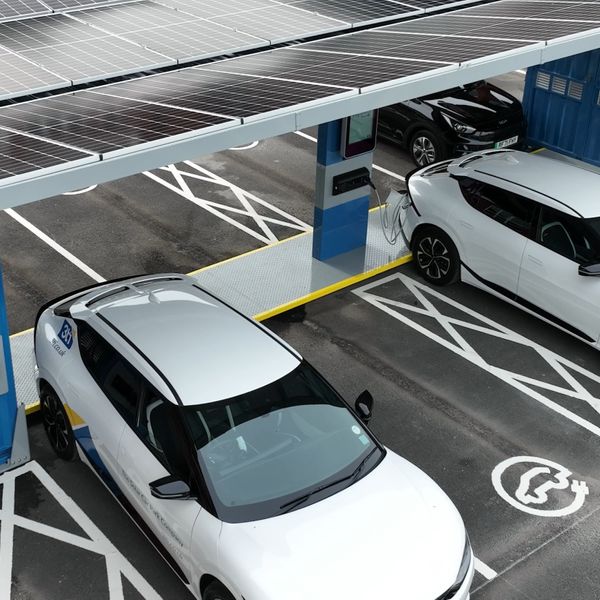BEV or FCEV? Which is the new Betamax?
If you're at a dinner party or on social media there are a few subjects which are guaranteed to get the conversation going, but not always in the most civil manner. Politics, religion and pineapple on pizza seem to be particularly incendiary topics.
But if you are going to be driving an electric car, you'll need to be prepared for another barrage of opinions. The most controversial is the battle between hydrogen and batteries. Should we be pursuing battery-powered electric cars at the expense of all other means of propulsion? Or is fuel cell technology a better way of moving to zero emissions?
Rather than express our own opinions, we thought it was best to let the experts explain and help you make up your own mind.
Representing hydrogen, we have David Rogers, an expert from Toyota. The company has been a champion of fuel cell technology and will happily sell you a Mirai, powered by hydrogen.
In the BEV corner we have Helen Perry from Nissan. The company pioneered mass market electric cars with the Leaf.
"Fuel cell cars are not better than battery electric vehicles. There. I’ve said it. The reason that fuel cell cars are so important is because they are part of a far bigger picture, when it comes to reducing environmental damage.
Let me explain.
Transport, which accounts for 42% of the energy used in the UK, has a huge role to play in decarbonising society, improving air quality and reducing the impact humans have on the environment. Alongside the government’s focus on reducing greenhouse gases by 2050, Toyota has its own environmental challenge for 2050, including the challenge to reduce the CO2 output of its vehicles by 90%, compared to 2010.
To do this, Toyota believes, there is not one single solution for cars. Instead, Toyota has invested in technology to meet immediate, medium and long-term environmental goals. Think about how many of our petrol-electric or self-charging hybrid vehicles you see on the road (15 million and counting, saving 120 million tonnes of CO2 emissions). Soon, you’ll see electric Toyota and Lexus cars too – because they are part of the clean transport solution.
![]() Not all Toyotas are 'self-charging' and more plug-in cars are planned
Not all Toyotas are 'self-charging' and more plug-in cars are planned Hybrid is the here and now but you can buy a hydrogen-powered Toyota. The Mirai is an electrified car – it has a battery, an electric motor and an inverter, just the same as a BEV – but the energy used to power it comes from the chemical process of its hydrogen fuel bonding with oxygen to generate electricity, which is used to power the car.
In a nutshell, how it works is that you fill your car with hydrogen – using a pump, just like with regular fuel, taking about three to four minutes to fill. In use, hydrogen is sent from the tank to the fuel cell, where it is mixed with air brought in through the intake grille and the chemical reaction between the two produces electricity. This electricity is sent to the motor, when you put your foot on the accelerator. Overall, Mirai is a zero-emissions vehicle that can travel around 300 miles on a 5kg tank of hydrogen.
The fuel it takes to power the Mirai’s 300-mile range can be produced from 50 litres of water and the only thing the car will emit from its tailpipe is water. Water so clean you could drink it.
That’s one of the main reasons that hydrogen has a big role to play in delivering cleaner transport – it can be made and used cleanly. One way is to use energy and water – electrolysis. You can use any water, including seawater. Another, by removing hydrogen as a by-product from industrial processes. You can even extract hydrogen from biowaste. Yes, you can make hydrogen from manure!
![Toyota Mirai]() Will you Mirai me, proposes Toyota
Will you Mirai me, proposes Toyota Hydrogen can also be transported easily and stored with no loss of energy – loss which you do experience when storing energy in a battery. Because of this, Toyota looks beyond simply using hydrogen to power vehicles. Hydrogen could play a significant role in powering society as a whole, alongside traditional energy sources.
For Toyota, it’s exactly the reason why fuel cell cars ought to increase in popularity – because they are part of the bigger picture. Toyota looks at transport other than just the car. Already, buses, trucks, forklifts, trains and boats are running safely on hydrogen and hydrogen generators present a green alternative to diesel or gasoline powered outdoor events and activities.
By the end of this decade Toyota will have made around 30,000 fuel cell cars (and a fair few buses). It’s not about fuel cell cars being better than BEVs – they are part of the wider solution."
![]() We can all get on board with Toyota's hydrogen-powered bus
We can all get on board with Toyota's hydrogen-powered bus "With the dawn of any new technology, multiple solutions often seek to achieve similar goals. Some have been transformational: in the early days of electricity the battle between Alternating Current (AC) vs Direct Current (DC) helped define the modern world. Other rivalries – while less revolutionary – still fondly define an era. Who among us owned a Betamax player in the 1980s?
Today, one of the biggest debates is around zero-emissions vehicles, and how to best encourage mass-market adoption. Battery Electric Vehicles (BEVs), which are often powered by a rechargeable lithium-ion battery, are rapidly gaining popularity alongside Fuel Cell Electric Vehicles (FCEVs).
Fortunately, it’s great to have multiple options available. EVs using any powertrain stand to have much-needed benefits for our environment, as they seek to shift away from polluting fossil-fuelled vehicles. Each comes with its own benefits, but for me, Battery Electric Vehicles outmanoeuvre the alternative options.
![]() Is the fuel cell the Betamax for a new generation? (PIC: Sony)
Is the fuel cell the Betamax for a new generation? (PIC: Sony) The main thing to remember is that the world needs to make the switchover to EVs now. With BEVs, we’re already well on the way to achieving this, since the power networks we need are largely already in place. And thanks to Vehicle-to-Grid (V2G) technology, we can ensure the grid is not only able to cope with a big rise in demand, but BEVs can even store energy and return energy back to the grid when they’re not in use!
European governments are committing billions more euros to expanding the number of EV charging points, which are already readily available throughout most developed countries. Conversely, at present there are only eight hydrogen refuelling stations in the UK.
The sheer accessibility of public charging sources also means there’s a near-infinite number of places to plug in BEVs. Lamp posts can be readily adapted to become charging sources, while at home, you simply need to plug into a socket and relax. Cars are typically idle 90% of the day and most of us are in the habit of recharging our phones overnight - so what could be simpler than doing the same with our vehicles?
![]() Electric cars can be charged almost anywhere during the 90% time period when the car isn't being used
Electric cars can be charged almost anywhere during the 90% time period when the car isn't being used Of course, we know that some buyers still experience range anxiety. But the average Nissan LEAF driver in Europe covers only 27 miles per day, while the Nissan LEAF e+ has a top range of 239 miles on a single charge. This is clearly more than enough for your average daily journey, especially if you plug in each evening.
Making EVs accessible also means making them affordable. Most average BEVs have lower price points than other types of EV, and with home charging you can power your BEV for as little as 4p a mile. Even if you own a FCEV or charge from public charging points, it’s still less costly long-term than filling up with petrol.
Yet when powering up our vehicles, we need to be conscious of the impact fuel generation on the environment. Ever-expanding renewable electricity sources means the total CO2 footprint of BEVs stands to drop even further over time. And if you have solar panels integrated to your home system, you can truly live 100% zero-emissions.
![Nissan Leaf e plus]() The average Leaf driver covers 27 miles per day, on average
The average Leaf driver covers 27 miles per day, on average Some people are still sceptical that BEV technology can go the distance, but I think this particular part of the debate is settled. The Nissan LEAF, for example, has gone from strength to strength in 10 years, with almost half a million units sold worldwide. Hardly a fad!
I’m proud that we have arrived at a time when we have multiple clean vehicle solutions ready to transform mobility as we know it. With each innovation we move closer towards the cleaner world that many of us have dreamed of for years. For me however, that future will largely be driven by BEVs. Thanks to how far we’ve already come with this technology, I think there’s no turning back."
![Whie Nissan Leaf parked on pavement]() Cars like the Leaf mean the writing is on the wall for conventional engines
Cars like the Leaf mean the writing is on the wall for conventional engines 




.png)





.jpg?width=820&height=530)





